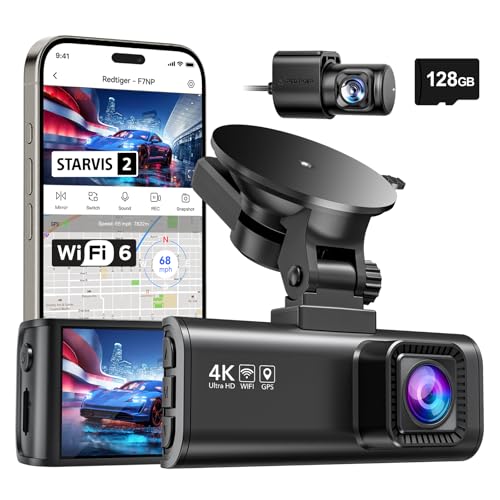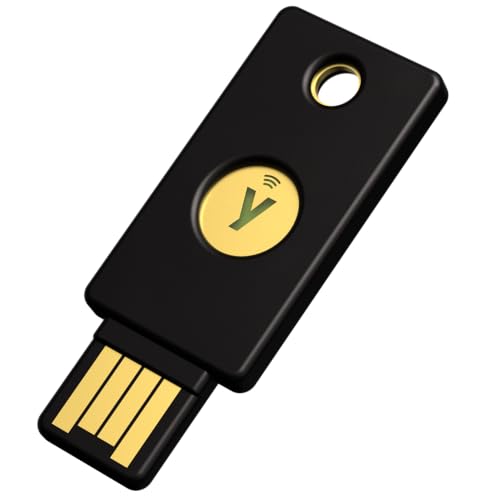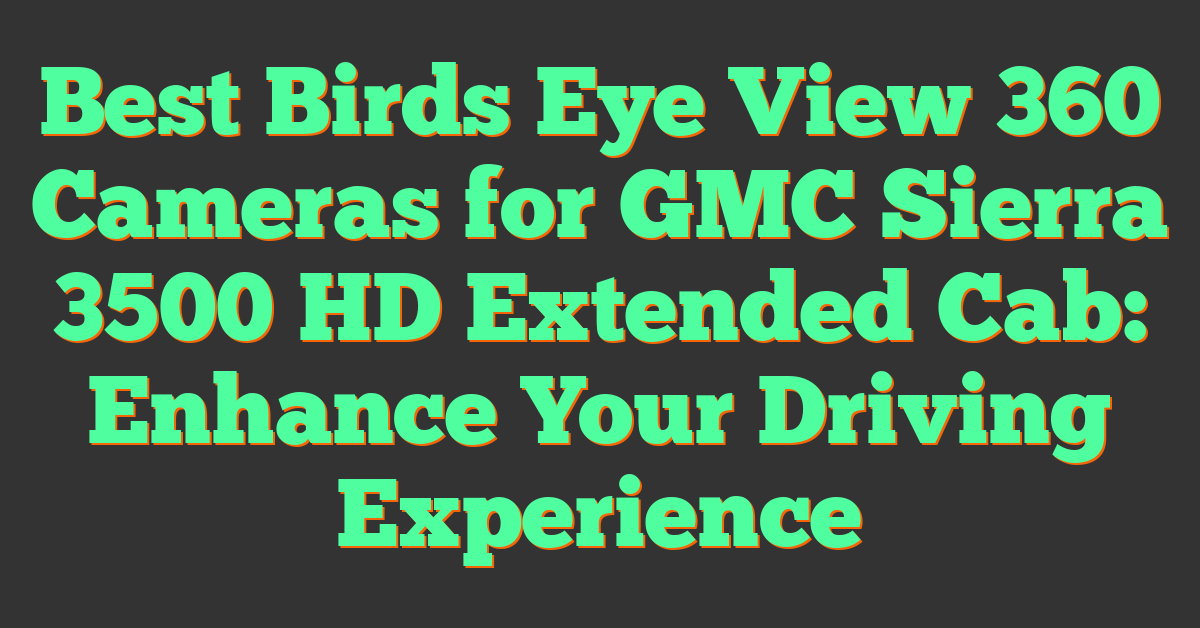Key Takeaways
- Security 360 cameras provide panoramic coverage, eliminating blind spots and reducing the need for multiple traditional cameras.
- Advanced features like motion tracking, night vision, and AI integration enhance security and creative capabilities.
- Though cost-effective over time, initial investment and maintenance can be challenging for budget-conscious buyers.
- These cameras are versatile, suitable for residential, commercial, and public safety use cases.
- Potential drawbacks include higher upfront costs, technical complexities, and privacy concerns that require careful consideration.
- Before purchasing, evaluate budget, system compatibility, and brand reliability to make an informed decision.
When it comes to protecting what matters most, investing in the right security tools is crucial. Security 360 cameras have gained popularity for their ability to provide comprehensive coverage, but are they really worth the cost? With so many options on the market, it’s easy to feel overwhelmed when deciding if this technology is the right fit for your needs.
I’ve explored the key features, benefits, and potential drawbacks of these cameras to help you make an informed decision. Whether you’re considering one for your home or business, understanding their value could save you time, money, and stress. Let’s dive into what makes these devices stand out—and whether they deliver on their promises.
Understanding Security 360 Cameras
I’ve spent years working with and documenting 360 cameras, particularly Security 360 models, which cater to unique needs in safety and surveillance. These cameras provide advantages beyond traditional setups and continue to evolve, captivating enthusiasts like myself with their potential for innovation.
Key Features Of Security 360 Cameras
Security 360 cameras stand out for their ability to capture panoramic views using advanced imaging technology. Most models include features like dual-lens configurations, stitching software for seamless video output, and high-resolution sensors, often reaching 4K or higher.
Wide-area coverage minimizes blind spots, with models covering up to 360 degrees in one go. Functionality like motion tracking ensures dynamic subjects stay within the frame. Night vision, delivered via infrared LEDs, allows consistent monitoring even in total darkness. Smart integrations with AI-based systems enable people or object recognition, offering quicker response capabilities.
Built-in options like cloud storage or SD compatibility ensure secure data management without complex setups. Many models also support mobile apps, enabling remote access or real-time alerts on the go.
How They Differ From Traditional Security Cameras
Unlike traditional models, which capture limited angles, Security 360 cameras combine images for full-room monitoring. This eliminates the need for multiple cameras and reduces equipment costs while improving visual continuity.
Security 360 cameras excel in video frame merging, avoiding the staggered visual gaps typical in separate multi-camera systems. Their integration with virtual reality allows you to review footage interactively, offering immersive debriefing experiences useful for photographers or analysts.
Installation is often more straightforward, with many models using magnetic mounts or ceiling attachments, whereas conventional cameras typically need heavier hardware and precise directional adjustments.
Pros Of Investing In Security 360 Cameras
« The Pros and Cons of 360 Camera Technology: Is It Worth the Hype?
The Cultural Impact of 360 Camera Adoption: How Immersive Tech Is Changing Storytelling Forever »
Security 360 cameras bring unique advantages that go beyond traditional security setups, appealing to enthusiasts like me who appreciate their versatility and advanced capabilities. They’re not only functional for security but also provide creative opportunities for photography and videography professionals.
Enhanced Coverage And Visibility
With their ability to record panoramic views, Security 360 cameras eliminate blind spots better than most conventional models. These cameras can capture entire spaces with fisheye or dual-lens configurations, ensuring nothing escapes the frame. For photographers, this means experimenting with immersive perspectives, while videographers can create dynamic virtual tours for clients. Their high-resolution sensors, often 8K or above, make them perfect for producing clear, detailed footage in any lighting condition, including low light or nighttime environments.
Cost-Effectiveness Over Time
By reducing the need for multiple units, 360 cameras save money in the long run. Instead of installing numerous traditional cameras to cover various angles, one strategically placed Security 360 camera achieves the same result. As someone who values efficiency, I find this significant both for personal projects and professional setups. This is especially true for businesses offering full-room surveillance or virtual walkthroughs. The investment in one high-quality unit outweighs the recurring costs of managing multiple devices, from purchasing to maintenance.
Advanced Smart Features
Various smart features enhance functionality and make these cameras stand out. Motion tracking allows seamless subject-following, great for capturing movement in creative projects or active monitoring. Integration with virtual reality makes footage not only interactive but also sharable across digital platforms like social media, adding value for content creators. Many models offer AI-driven insights that detect unusual activity in real time, providing layers of safety. For me, these features bridge security with opportunities to explore and innovate visually.
Potential Drawbacks To Consider
Although Security 360 cameras come with impressive features and benefits, they also have some challenges worth noting. As someone passionate about 360 photography and videography, I believe understanding these potential drawbacks ensures informed decisions.
Higher Initial Costs
Security 360 cameras often come with higher price tags compared to traditional models. Advanced technology like dual-lens systems, high-resolution sensors, and integrated smart features drives these costs. For photographers or videographers, investing in cameras like the Insta360 Pro 2 or Ricoh Theta X might feel worthwhile for their quality, but the upfront expense could limit choices for those on tighter budgets.
Maintenance And Technical Challenges
Security 360 cameras require consistent maintenance to perform optimally. Factors like frequent firmware updates, cleaning dual lenses, or calibrating advanced sensors can seem time-consuming. From my experience at a 360 camera manufacturer, I’ve seen users struggle with post-processing software or issues like stitching errors in panoramic footage. Compatibility with editing tools or device firmware could also create barriers for beginners.
Privacy Concerns
Wide-angle capabilities in Security 360 cameras raise privacy risks, especially in shared spaces. A single camera might unintentionally capture more than intended, leading to potential misuse. For photographers and videographers working on private projects, ensuring compliance with data protection laws or obtaining consent becomes crucial. While these cameras deliver unmatched creative control, the ethical responsibility tied to their use can’t be overlooked.
Key Use Cases For Security 360 Cameras
Security 360 cameras provide versatile applications for photographers, videographers, and creative professionals. Their ability to capture panoramic views with enhanced details makes them invaluable in various environments.
Residential Applications
Security 360 cameras elevate home security by offering complete visual coverage of indoor and outdoor spaces. They reduce the need for multiple devices, saving money and space. I’ve often used them to document dynamic family events, where their ability to seamlessly merge footage creates immersive memories. Features like motion detection and two-way audio also double as tools for monitoring pets or communicating with visitors remotely.
Their night vision capabilities are a bonus for nighttime photography. I’ve captured stunning stills and videos during low-light conditions, experimenting with angles that traditional cameras can’t achieve. For homeowners, these cameras combine security and creative flexibility in one device.
Commercial And Industrial Settings
In commercial environments, Security 360 cameras streamline security protocols by providing extensive coverage of large areas, such as warehouses and retail stores. When I previously worked with a 360 camera manufacturer, I saw businesses integrate these tools to conduct time-lapse videography for construction sites and promotional videos for product setups.
For videographers, their wide field of view enhances event coverage, especially in crowded or intricate spaces like factories or conference halls. During a recent exhibition shoot, I used a Security 360 camera to capture both the audience’s reactions and the speaker’s delivery, offering clients a comprehensive view of their event dynamics.
Public Safety And Surveillance
Public safety benefits from Security 360 cameras in high-traffic areas like parks, transportation hubs, and stadiums. Their panoramic monitoring reduces blind spots, improving crowd management and incident response. When I’ve documented public gatherings or protests, these cameras have captured every critical moment with unparalleled clarity, even in unpredictable situations.
For creative professionals involved in urban or documentary filmmaking, they offer an opportunity to create compelling stories. Capturing cityscapes or public behavior with a single 360 perspective immerses viewers, making the footage extraordinarily engaging. Their smart tracking tools also ensure no action is missed, be it for security or artistic purposes.
Factors To Consider Before Buying
When deciding whether to invest in a Security 360 camera, I focus on key factors that align with my passion for photography, videography, and creating immersive VR content. Considering these aspects ensures the camera suits both creative and security needs.
Budget And Installation Costs
The upfront cost of Security 360 cameras varies significantly, often ranging from $150 to $1000 depending on features like resolution, AI capabilities, and build quality. Higher-end models with advanced imaging sensors and robust weatherproof designs cost more but offer long-term value. Installation expenses can also add up for wired systems requiring professional setup, though many modern 360 cameras feature plug-and-play designs, simplifying DIY installation.
If budget constraints exist, prioritizing essential features such as high resolution, low-light performance, and reliable motion detection supports quality results while avoiding unnecessary expenses. For instance, I prefer models that balance affordability with core creative features, making them versatile for both security and artistic use.
Compatibility With Existing Systems
Ensuring the compatibility of a Security 360 camera with your current equipment avoids integration headaches. Many cameras connect seamlessly with smart home devices, NAS systems, or editing software through wireless protocols like Wi-Fi and Bluetooth. However, it’s essential to check that camera firmware and app interfaces support your workflow.
For me, integrating a 360 camera into my video-editing ecosystem is critical. Cameras offering VR-ready footage or RAW image export simplify post-production, while those with APIs for third-party software expand creative possibilities. This functionality complements seamless system compatibility, saving time during my projects.
Brand Reliability And Warranty Options
Selecting a reliable brand with a strong reputation impacts both performance and support. Trusted manufacturers often provide frequent firmware updates, improving functionality and security over time. I recommend brands like Insta360 and Ricoh, known for producing durable and versatile 360 cameras favored by professionals.
Warranty options are equally important. Many brands offer one- to two-year coverage, protecting against defects and maintenance challenges. Extended warranties become valuable, especially for outdoor or professional use cases where wear and tear are inevitable. In my experience, investing in a camera from a reputable brand backed by solid customer support ensures peace of mind and maximizes long-term benefits.
Conclusion
Deciding whether a Security 360 camera is worth the investment ultimately comes down to your specific needs and priorities. These cameras offer impressive features, advanced technology, and long-term cost benefits that make them a standout option for those seeking reliable security solutions.
While the upfront costs and potential maintenance challenges might seem daunting, the enhanced coverage, smart capabilities, and versatility they provide can outweigh these concerns for many users. By carefully evaluating your budget, desired features, and compatibility with existing systems, you can determine if a Security 360 camera aligns with your goals.
For anyone looking to elevate their security setup or explore creative possibilities, these cameras present a compelling option.















